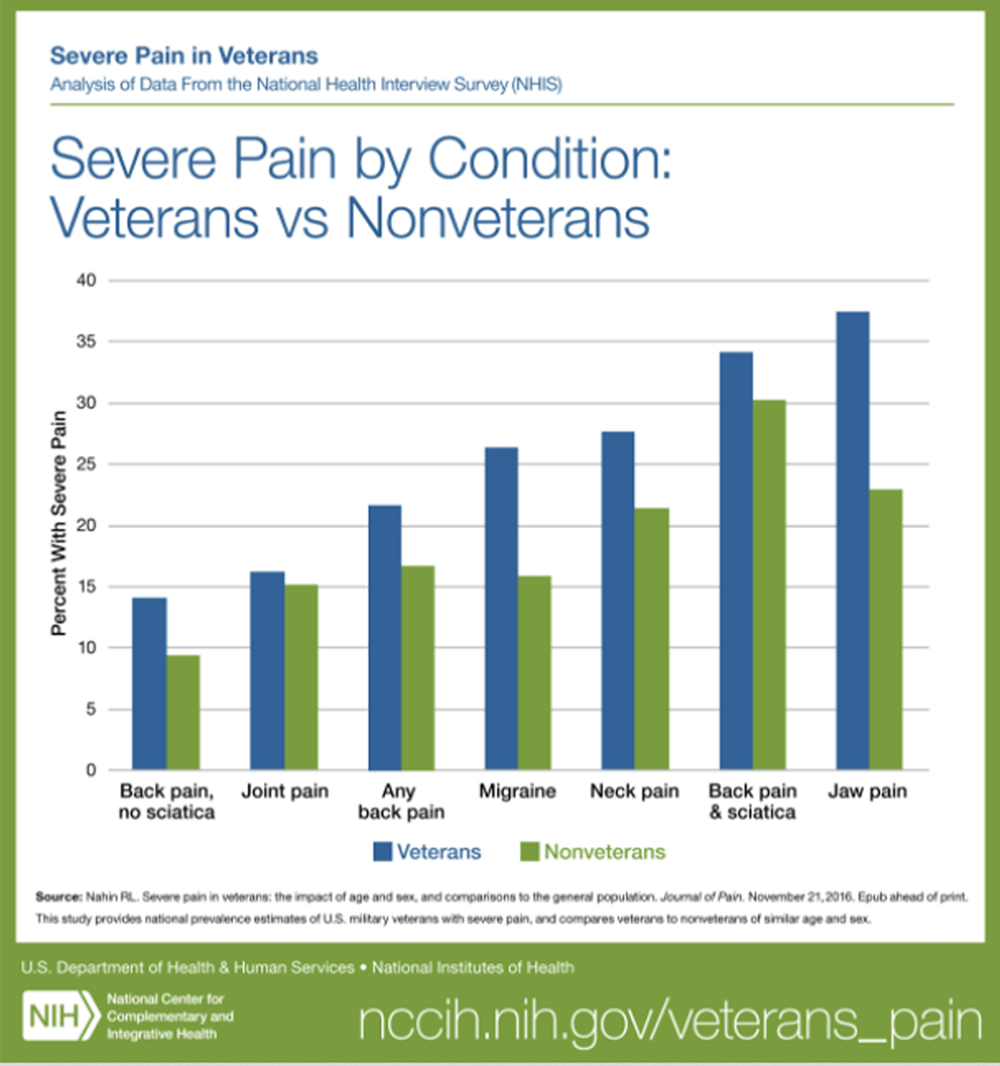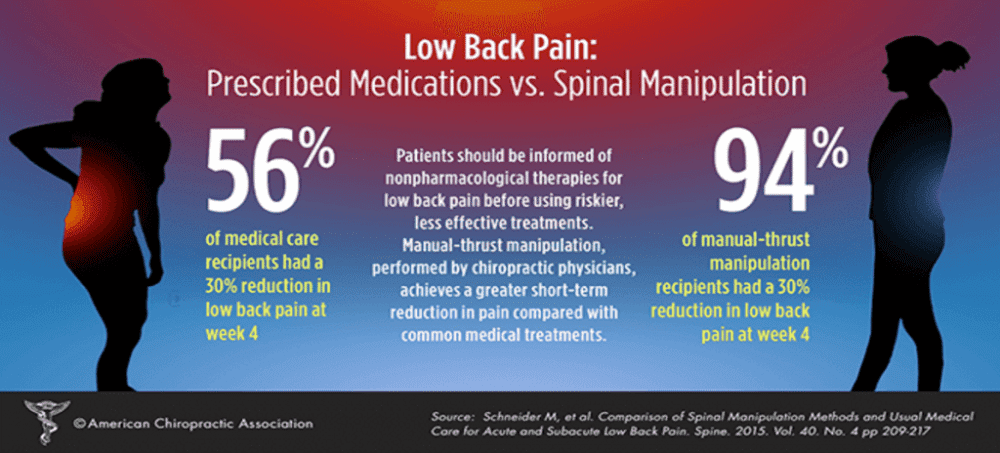Chiropractic Clinical Outcomes Among Older Adult Male Veterans With Chronic Lower Back Pain: A Retrospective Review of Quality-Assurance Data
SOURCE: J Chiropractic Medicine 2022 (Jun); 21 (2): 77–82
| OPEN ACCESS |
Brian A. Davis, DC, Andrew S.Dunn, DC, MS, MEd, Derek J. Golley, DC, MS, Dave R. Chicoine, DC, MS
Chiropractic Department,
VA Western New York Healthcare System,
Buffalo, New York.

FROM: Nahin ~ Pain 2017
Objective: The purpose of this study was to determine whether a sample of older adult male U.S. veterans demonstrated clinically and statistically significant improvement in chronic lower back pain on validated outcome measures after a short course of chiropractic care.
Methods: We performed a retrospective review of a quality-assurance data set of outcome metrics for male veterans, aged 65 to 89 years, who had chronic low back pain, defined as pain in the lower back region present for at least 3 months before evaluation. We included those who received chiropractic management from January 1, 2010, to December 31, 2018. Paired t tests were used to compare outcomes after 4 treatments on both a numeric rating scale (NRS) and the Back Bournemouth Questionnaire (BBQ). The minimum clinically important difference (MCID) was set at 30% change from baseline.
There is more like this @ our:
NON-PHARMACOLOGIC THERAPY Section and the:
Results: There were 217 individuals who met the inclusion criteria. The mean NRS score change from baseline was 2.2 points, representing a 34.1% reduction (t = 13.5, P < .001). The mean score change for BBQ was 14.7 points, representing a 35.9% reduction (t = 16.7, P < .001). The percentage of participants reaching the MCID for the NRS was 57% (n = 124) and for the BBQ was 59% (n = 126), with 41% (n = 90) of the sample reaching the MCID for both the NRS and BBQ.
Conclusion: This retrospective review revealed clinically and statistically significant improvement in NRS and BBQ scores for this sample of older male U.S. veterans treated with chiropractic management for chronic low back pain.
Keywords: Adult; Chiropractic; Low Back Pain; Manipulation, Spinal; Veterans.
From the FULL TEXT Article:
Introduction
Trends in aging demonstrate that the U.S. and worldwide populations are getting older and will continue to progress in a fashion that further increases the proportion of older individuals. [1, 2] The proportion of the U.S. population aged ≥65 years is projected to increase from 12.4% in 2000 to approximately 20% in 2030, from 35 million to 71 million people. [1, 2] This has implications for health care services worldwide, including the Veterans Health Administration division of the U.S. Department of Veterans Affairs (VA). [3] These implications are especially pronounced within the VA, as the average health status of older veteran enrollees is poorer than that of older individuals enrolling in Medicare managed care. [3] Of note, according to the Veteran Population Projection Model 2018, the veteran population is expected to decline from 19.5 million in 2020 to 13.6 million by 2048 — a 1.8% reduction per year. However, despite the slow projected decline over the next 3 decades, the current older veteran population remains a robust patient base.
Older adults, those aged 65 years or older, commonly report experiencing lower back pain (LBP; 25%–33% annually). [4–6] Although the overall prevalence of LBP is similar to that in the younger working-age population, the prevalence of disabling LBP and the complexity of its presentation among older adults are much greater than in their younger counterparts. [4–7] Factors which potentially worsen prognosis in LBP are more common among older adults, including longer duration of symptoms, the presence and increased severity of degenerative changes, medical comorbidities, and decreased functional status. [7]





Leave A Comment